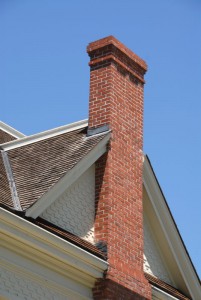One of the most important parts of your fireplace and chimney system, chimney liners are required by most local fire safety codes and regulations. Whether you have a wood-burning, gas, or oil heating appliance, your chimney needs to be lined to work efficiently and safely. At The Mad Hatter, we sell and install different types of chimney liners, and we have the experience and expertise to recommend which liner will work best with your chimney. Even if you already have an existing chimney liner, it could be suffering from damage and deterioration. A cracked liner can be just as hazardous a non-existent liner. We at The Mad Hatter would like to tell you more about chimney liners and why repairs to damaged liners are so important for a safely functioning chimney.
Functions of Chimney Liners
According to the Chimney Safety Institute of America (CSIA), chimney liners serve three main functions:
- By protecting your house from heat transfer to combustibles, chimney liners are essential in preventing chimney fires.
- By also protecting the masonry work of your chimney from the corrosive byproducts of combustion, which are acidic gases and vapors that will deteriorate the mortar joints. This can lead to dangerously rapid heat transfer and leaks of toxic gases like carbon monoxide into your home.
- By providing a correctly sized flue, chimney liners make your heating appliances work more efficiently. It is important that you have certified professionals like our technicians at The Mad Hatter install your chimney liner. An incorrectly sized chimney liner can cause hazardous conditions, including large deposits of creosote and the production of poisonous carbon monoxide.
Types of Chimney Liners
You can find three different types of chimney liners:
- Clay Tile – The most common type of liner found in masonry chimneys, clay tile liners are inexpensive, easy to find, and function well in properly maintained chimneys. However, there are a couple of downsides to these liners. Because the tiles are ceramic, they do not distribute heat evenly. Uneven heat distribution causes an unequal expansion that will cause the clay tiles to crack and split. These cracks must be repaired before you can use your chimney. The other disadvantage of clay tile liners is they cannot contain the corrosive liquid byproducts of combustion produced by modern gas-fueled appliances.
- Metal – We at The Mad Hatter strongly recommend this type of liner, and we suggest the liner be made from durable, long-lasting stainless steel. You can also find metal liners made from aluminum. Another advantage to stainless steel liners is they generally come with a lifetime warranty.
- Cast In-Place – Made from a lightweight, castable cement-like product, a cast in-place liner creates a smooth, seamless, and insulated pathway for the gases produced from combustion to exit your chimney. This type of chimney liner is best for aging chimneys because it can improve structural integrity.
Want to know more about chimney liners and their repairs? Contact The Mad Hatter team to learn more about the importance of durable, functioning chimney liners.

